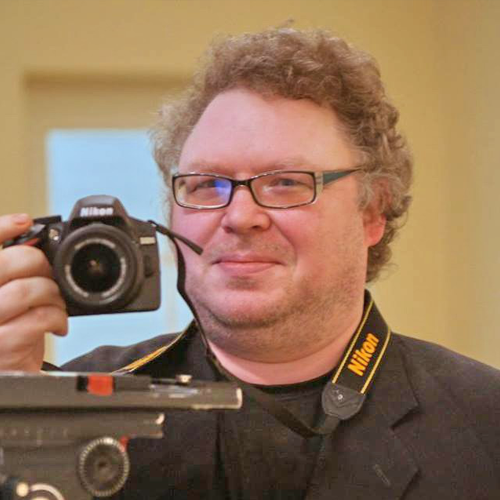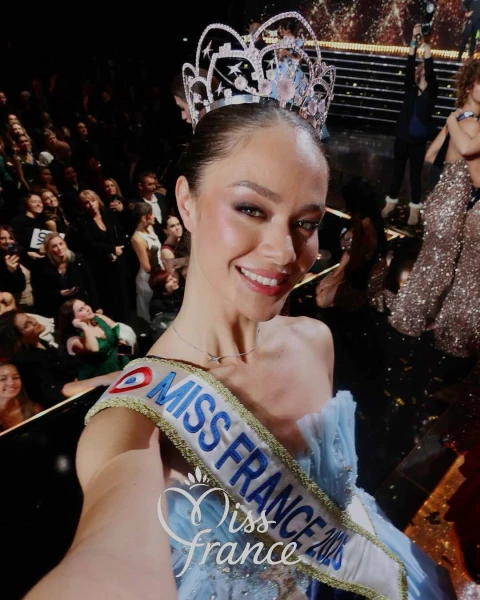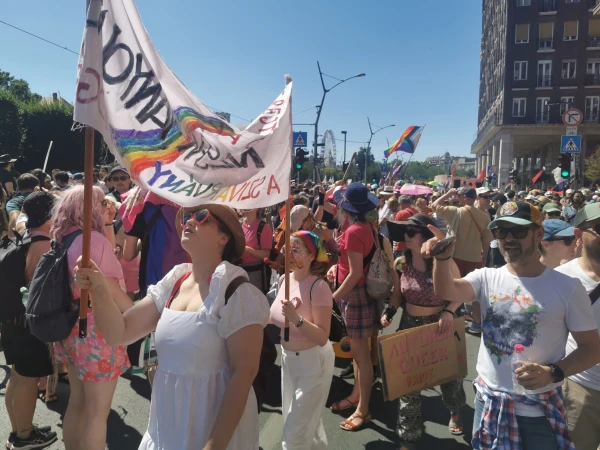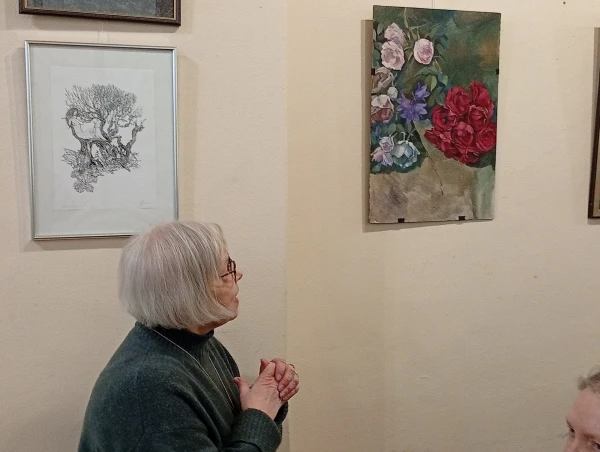
In the grand hall of the mansion of the Association of National Cultural Societies named after Ita Kozakevich, an exhibition has opened in honor of the 80th anniversary of the remarkable Riga artist Elena Antimonova. Unfortunately, she passed away at the age of 57, but her memory lives on.
Her World
Outstanding graphic artist and watercolorist Elena Nikolaevna Antimonova was born in Tbilisi. In 1971, she graduated from the painting department of the State Academy of Arts of the Latvian SSR. In 1976, she was accepted as a member of the Union of Artists of the Latvian SSR. She participated in exhibitions since 1969. Solo exhibitions were held in Riga, Tartu, Poland, Murmansk, and Venice (1991). Her works were exhibited in Switzerland, Finland, Japan, Germany, Denmark, and France. She designed and illustrated more than 60 books, including classics of world literature, fairy tales, poetry collections, as well as miniature books of Latvian dainas. Among the best publications she worked on are the books of Alexander Fet, Rainis, Ojars Vacietis, William Shakespeare, Wilhelm Hauff, and Japanese fairy tales.
Antimonova was one of those who created (or simply found) her own world. She lived and worked in the 20th century but constantly returned to the past, to the same twenties and thirties when she was not yet born. And thus she represented, in the best sense – salon, even refined, art.
And at the same time, she could be a bit of a rogue. When Elena illustrated erotic Latvian dainas with slightly frivolous yet elegant graphics, many were surprised. Elena Antimonova was indeed a person of a thousand talents: in her later years, she began creating computer graphics as well.
"13 Angry Intellectuals"
"We celebrated Elena's anniversary, an outstanding artist who used to visit this house," said the head of ANKOL, pianist, Professor Raffi Harajanyan. "By the way, she was with us after the big scandal related to the letter '13 Angry Intellectuals' – regarding national minorities. This was in the late 1990s.
At that time, President Guntis Ulmanis called this letter hooliganism, although the letter was signed not only by me and Antimonova but also by the famous journalist Viktor Avotins, the outstanding poet Uldis Berzins, and other figures.
But then Ulmanis said he was unfair and invited us all to his place. We were at the presidential palace, Uldis Berzins came, sat next to me, and when I told him that here are the hooligans with the president, what should we do, he humorously replied: 'My grandmother taught me as a child: if the president invites you, you should not refuse.' In general, after that, we were given money for a business trip to Finland. And we were there with an exhibition; I chose Arturs Nikitins and Elena Antimonova for it. There was my concert with Nora Novik, singer Samson Izjumov..."
Thus, the professor drew a direct analogy with how issues were resolved before and how they are now. Nowadays, according to him, in ANKOL, one must speak in the state language, as the mansion is under the jurisdiction of the Ministry of Culture of Latvia. But upstairs, according to Harajanyan, there is a studio of Koreans, and they speak Korean. To not forget their native language. The professor delivered this entire speech in the state language! No complaints.
The Story of One Work
"I used to visit Lena's large studio on the sixth floor at the corner of Bruninieku and Terbatas streets," says Raffi Ispirovich. "We climbed up without an elevator. It was a good place, a meeting place for cultural figures. And now her works are in private collections; her friends provided Antimonova's paintings for this exhibition. Collecting all this, as you understand, was extremely difficult. We had to contact each person, talk, collect, compose the exhibition, and so on. Thanks to the exhibition curator Yuri Slavic for such work."
Among the works presented are roses painted in oil (it was gifted to musicologist Olga Peterson by Elena), as well as a portrait of the outstanding singer Inga Kalna. Both Olga and Inga, who now lives in Hamburg, were also present at the opening of the vernissage.
"This painting with roses has a very interesting story," said Mrs. Peterson. "It is cardboard, the work is not signed because it is unfinished. Lena loved roses, all kinds, but especially the roses in her garden. These roses grew abundantly on the bushes. She painted them in buds, in full bloom, as well as wilting. In various, so to speak, stages of flowering and death. Lena's sister-in-law, the famous radio journalist Tanya Zanderson, with whom I once worked at Latvian Radio, took and gifted me this unfinished work."
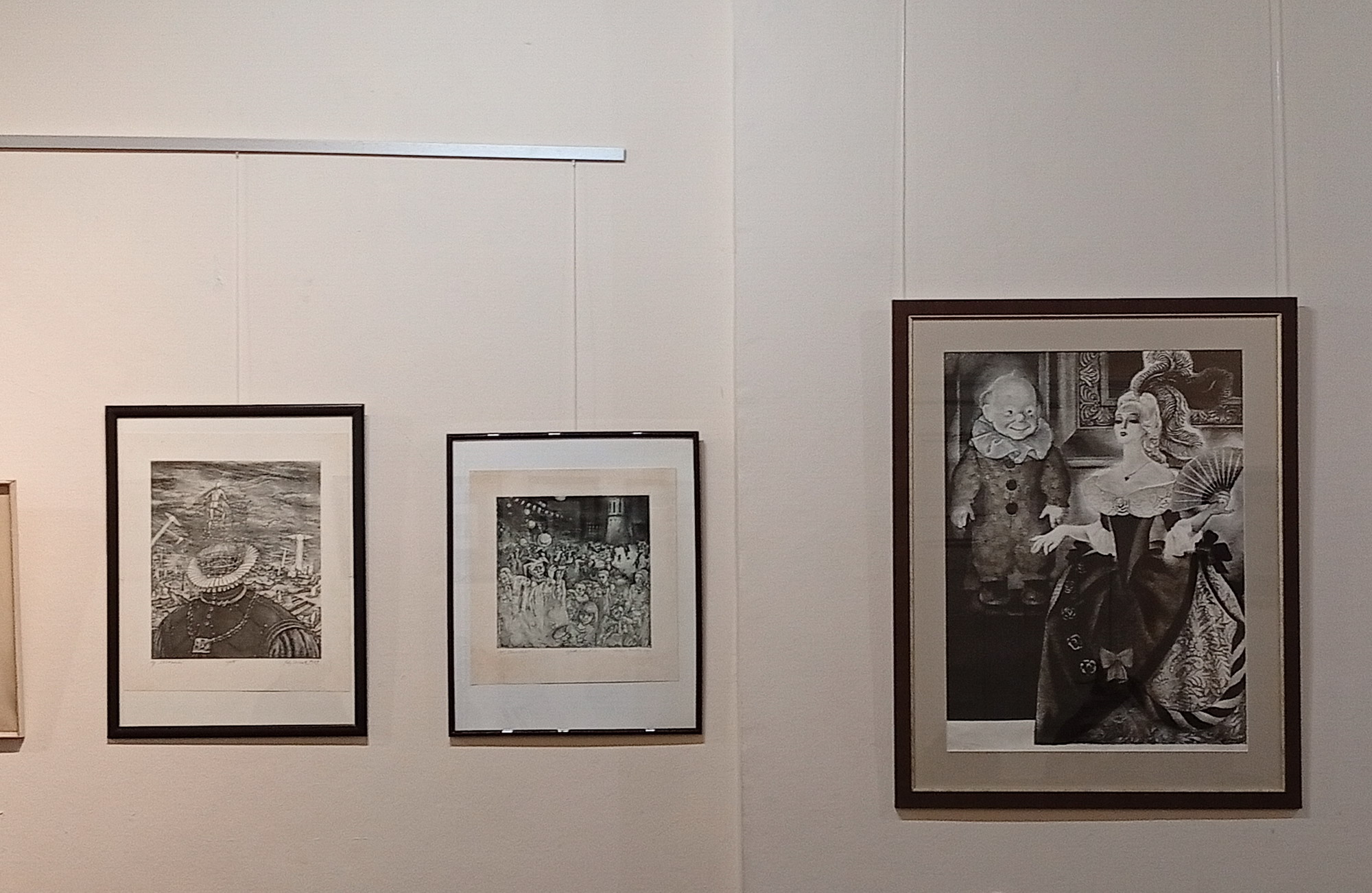
No, Thank You
– I brought this work home and started thinking about where to hang it, – continues Olga Peterson. – And I realized that it was impossible to keep it at home. And I will tell you why. There is so much pain in it, so much farewell to life. It is so tragic for me. Perhaps I am projecting my feelings onto this painting, which was made in the last summer of Elena's life. I realized that I could not keep it at home because I live in a regular block of flats – there is a small distance between the walls. And how can one live with such a constant reminder of the transience of life? It is impossible to keep it in my house. And I understood that I wanted to hang this painting in a large space. But where to give the painting so that as many people as possible can see it? And understand what is embedded in it. I offered this painting to the Latvian National Museum of Art. And the national museum said, no, thank you. I was shocked.
And the work lay in my folder. And suddenly it occurred to me: my God, I can gift it to ANKOL! People come here, they will see it, they will understand. And I offered this painting to Raffi Ispirovich and his wife Asmik. And I feel that this is exactly the place where this painting can live.
This morning I thought about what I would name this painting. There is a musical piece called 'The Last Rose of Summer.' I would call it 'The Last Roses of Life' because it is the truth. And let it remain so. And thank you."
Secrets of Inspiration
For her part, Inga Kalna said that the presented portrait is the only work she has left; it hangs in her home in Hamburg.
"This is a copy by Lena, from the late nineties, just when she became interested in computer graphics, when computers had just appeared. She experimented, and this is her original copy. At that time, I started my career, and a cassette of my performances was released, 45 minutes on one side of the cassette. I gifted it to Elena, and she told me that she often wrote her works while listening to my voice. And for me, this is more important than the portrait itself – it is more important to inspire work than to be captured on canvas," said the outstanding singer.
